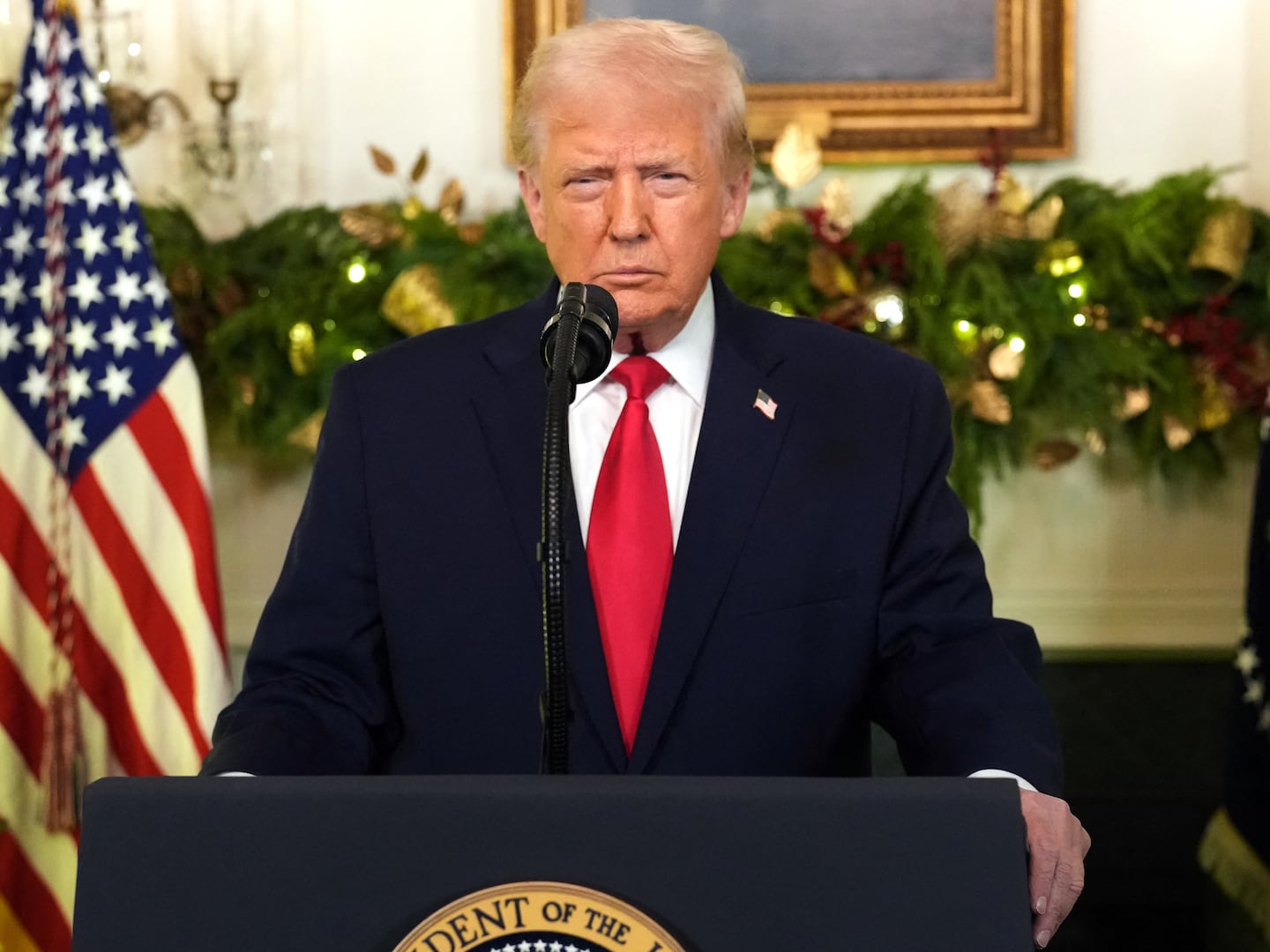He is the most wanted man in the world. But even after his alleged identification, there are still more questions than answers about the enigmatic creator of Bitcoin.

On March 6, Newsweek claimed to have located the digital currency’s legendary inventor, Dorian Satoshi Nakamoto. But the 64-year-old Japanese-American has continued to deny his involvement, saying he was simply misunderstood by the reporter and that he does not even have a working Internet connection in his home in a Los Angeles suburb.
Bitcoin has been a media obsession since the recent collapse of one of its largest exchanges, Mt. Gox, which declared bankruptcy after asserting that it had been hacked and lost nearly 850,000 Bitcoin–with an estimated value of nearly $500 million. Hundreds of people lost money in the collapse, some individuals with as much as $150,000 in Bitcoin. The Japanese government is now considering regulating the currency and transactions related to it. According to government sources, Japanese authorities are also considering possible criminal charges against the founder and the company, which may include violations of Japan’s banking laws.
The now infamous Nakamoto is the father of six, and has been a contractor for the U.S. military, doing classified work. But he is not known to be a computer or cryptological expert.
On March 9, Nakamoto gave an exclusive interview to the Yomiuri Shimbun, Japan’s largest newspaper. The interview was published on-line March 10, 2:41 p.m., Japanese time.
In the interview, Nakamoto flatly denied being the creator of Bitcoin. He is quoted as saying, “I had absolutely nothing to do with Bitcoin. I had never heard of Bitcoin until a few weeks ago.” He also added, “The designer of Bitcoin would never (logically) use their real name (本名). I don’t even have an Internet connection at home,” he added. Literally, what he said in Japanese could also be translated, as “The Internet in my house won’t connect.”
In the Newsweek article, Nakamoto is quoted as saying with regard to Bitcoin, “I am no longer involved in that.” But to the Yomiuri Shimbun, Nakamoto said about that Newsweek quote, “I prefaced the remark by saying that ‘Even if I was hypothetically involved … [I am no longer involved in that]’.”
There has been some question as to the uniqueness of the name “Satoshi Nakamoto” in Japan and in the United States, and whether that adds credence to the Newsweek article’s claims.
In the original 2009 essay that launched the virtual currency, “Bitcoin: A Peer-to-Peer Electronic Cash System,” there are no kanji representing Nakamoto’s name. Kanji are a system of Japanese writing using Chinese characters to phonetically represent names. Because of the limited number of vowels in the Japanese language, the language is riddled with homonyms. It is often extremely difficult to distinguish individuals or subjects without knowing the kanji characters. For example, the word hashi in Japanese could be represented in kanji as 箸(chopsticks) 橋(bridge) 端 (the tip) 嘴(the beak of a bird) or 波子 (a train station in Shimane Prefecture).
In identifying an individual, the correct kanji is essential. This why when the FBI asks Japan’s National Police Agency for the names of yakuza (Japanese mafia) members, in order to track their activities in the United States, they always request the kanji representation of the person’s name and their date of birth to avoid false positives.
The first appearance of the kanji for Satoshi Nakamoto was in 2011 in a translation of the original essay posted on the Bitcoin.co.jp website, which is part of the loosely connected federation of Bitcoin enthusiasts.
The kanji characters shown there are 中本(Nakamoto) 哲史 (Satoshi). In traditional Japanese style, the family name is listed first.
There are hundreds of ways of representing Nakamoto Satoshi in kanji. For example, 中本諭、中元,悟 etc. Experts contend that there are possibly 40,000 Nakamotos (中本) in Japan. However, in a 20 year database search of over 150 local newspapers and magazines with the name 中本哲史, there were only 14 hits and 2 people with that name (unrelated to articles about Bitcoin).
One was a 13-year middle-school student in 2003 and the other a teacher in his forties in Nagoya Prefecture who also coaches baseball.
But if the creator of Bitcoin truly wished to be anonymous and is a resident of Japan as claimed, it seems unlikely that he would use his true name (本名), as Nakamoto suggests. The Daily Beast is now contacting all those associated with Bitcoin.co.jp to clarify how the kanji used to represent his name in the 2011 essay was chosen. The translation of the essay was created on October 11, 2011 at 6:03 p.m., according to metadata embedded in the file. It is not clear whether Nakamoto was consulted about the correct kanji use for the phonetic notation of his name, whether the translator simply selected the kanji on his or her own, or even if Nakamoto translated his own essay. In general (and speaking as someone who has written for Japanese publications for more than 20 years), the standard practice for representing Japanese names for individuals when the kanji characters are not known, is the use of syllabary for foreign words, called katakana. Indeed, in the Yomiuri Shimbun article, the kanji for Satoshi Nakamoto does not appear and he is introduced in katakana, asドリアン・サトシ・ナカモト.
Last Friday, what appears to be the real Satoshi Nakamoto has posted through his long dormant account at P2P Foundation (the foundation for peer to peer alternatives) the straightforward denial, “I am not Dorian Nakamoto.” It is also the same place he first posted the Bitcoin software and the essay explaining it. However, that doesn’t mean that Dorian Satoshi Nakamoto could not have done it himself, if he is the cyber genius behind Bitcoin.
Nakamoto’s last previous posting in reply to another member was on February 18, 2009. Then, for five years, he remained silent.
However, the return of Satoshi Nakamoto to P2P Foundation forum raises a new mystery.
Nakamoto first widely posted the Bitcoin software and his essay explaining it on P2P on February 11, 2009 at 10:27 p.m. There is a link to the essay. But when you download this seminal paper, stored as a PDF, the meta data indicates it was created on March 25, 2009 at 2:33:15 a.m.
Did the original paper contain something compromising or incorrect and was it switched out for a newer version? And theoretically while you could toy with the metadata of a PDF to make it appear as if it was created later than it was originally created, why would you?
And where is the original essay, if it exists? Why would Satoshi Nakamoto replace the original essay with a later version, if he did?
There are many questions and answers are elusive.
Rashomon, anyone? The classic Kurosawa film may have become the go-to cliché for anyone who mentions confusing events, but here it fits perfectly to sum up this tangled narrative. The film is based on “In the Grove,” a 1922 story by Akutagawa Ryunosuke that presents several contradictory accounts of the murder of a samurai in a forest thicket. The accounts include those of a released prisoner, a woodcutter, a Buddhist mendicant priest, and even the ghost of the dead man himself, calling into question whether there is an objective truth to be found at all. Just so with Dorian Satoshi Nakamoto, whose identity seems increasingly lost in a cyber thicket that no one can penetrate.
Only one thing is for certain – Japan has become the epicenter of the still unveiling Bitcoin mystery.






